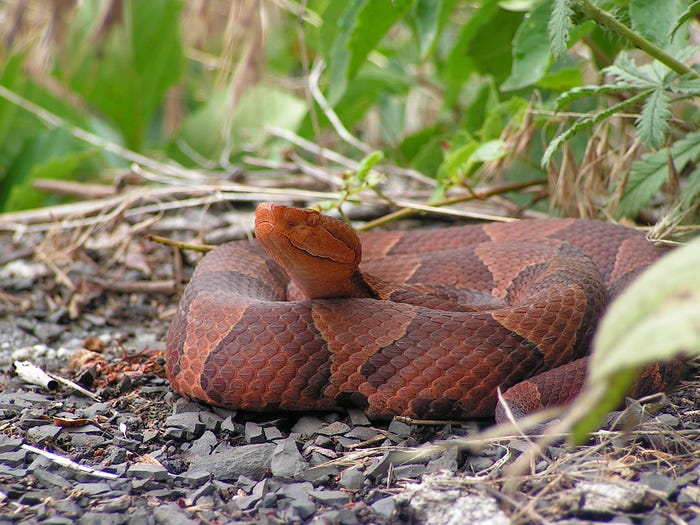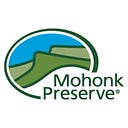Species Spotlight: Northern Copperhead

Looks like: This large, venomous snake has a wide, coppery red head, facial pits, and dark cross band in an hourglass pattern down its back.
Lives in: Open areas of deciduous forests with abundant rock cover, in particular talus slopes. Copperheads den communally during hibernation.

Niche: Active mostly at night, copperheads eat chipmunks, young squirrels, rabbits and mice. Young snakes are eaten by hawks, other snakes, raccoons, weasels, foxes, and skunks.
Threats: Illegal collection for the pet trade and killing by people who fear them. Copperheads play an important role in the Shawangunk ecosystem. If you see one, please keep your distance and leave it alone.
Frequency: Uncommon

Reproduction: Mating occurs in either spring or fall. Females can store sperm for at least one winter, so fertilization usually occurs the following spring and copperheads give birth to up to 20 live young in August and September.
Fun facts: During the breeding season, male copperheads “dance” in combat, raising the front third of their bodies off the ground, flicking their tongues, and swaying back and forth with bent heads. They lean forward and attempt to pin the other’s head to the ground, then entwine until one accepts defeat and moves away.
